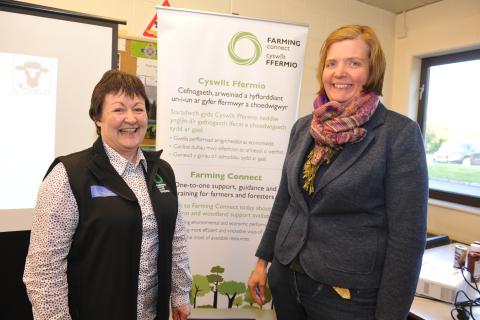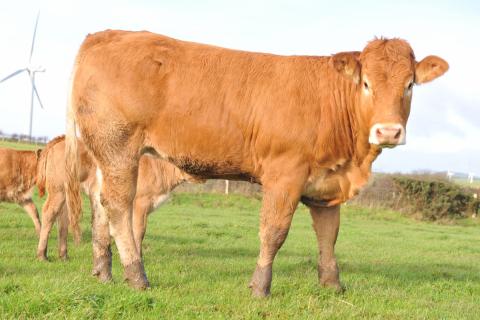15 May 2019
Wales’ suckled calf producers must focus on breeding the right type of cattle to meet an increased demand for lighter carcass weights.
The advice was delivered by independent beef consultant Dr Liz Genever at a Farming Connect Knowledge Exchange event at Brecon Livestock Market.
Dr Genever told suckler beef farmers that their goal should be to produce calves with the genetics finishers need to hit required specifications – and that might mean reviewing their bull choice.
Since changes to market specifications on carcasses were introduced in 2016, finishers are seeking suckler-bred calves capable of producing high killing out percentages at lighter weights.
Astonishingly, only around half of beef carcasses meet the target grid specification for conformation and fat class. That variability must be reduced, warned Dr Genever, who said genetics were the key to unlocking the potential.
“Making better use of proven performance genetics by selecting bulls with superior growth and carcase traits has never been more relevant,’’ she said.
Bulls in a breed’s top 10% for growth and muscling and the breed average for fat are likely to be the sires which produce progeny that hit the specification.
Dr Genever recommends avoiding buying fast-growing, lean bulls with very high 400-day weights and large, negative fat depth estimated breeding values (EBV).
Producers should instead buy bulls with a positive fat depth EBV, while maintaining a focus on 200 day and 400-day growth EBVs.
“Aim for a bull within at the least the top 25% and one with very good calving figures,’’ Dr Genever advised.
Many suckler beef producers are currently in the process of making their bull buying decisions.
For farmers who intend to purchase at a sale, Dr Delana Davies, of Farming Connect, advises requesting a copy of the sales catalogue in advance and drawing up a shortlist based on EBVs that match their requirements.
“Go to the sale and have a look at those bulls on your shortlist in the flesh and observe their locomotion, conformation and temperament,’’ she said.
“Have the confidence to bid on the bull that matches your requirements both on its performance figures and its looks.’’
The event was facilitated by Farming Connect Red Meat Technical Officer for south east Wales, Elan Davies.
Funding for the project was provided by the Welsh Government’s Rural Communities Rural Development Programme 2014-2020.
Dr Liz Genever’s EBV guide to producing the suckler beef calf required by finishers
EBVs for ease of calving
• Birth weight EBV (kg) - Enables sires to be selected for smaller calves at birth, for example a bull with an EBV of -4kg is estimated to produce calves with birth weights 2kg lighter than a bull with an EBV of 0.
• Calving ease EBV (%) - Identifies bulls whose progeny will be born without assistance, for example a bull with an EBV of 6 is estimated to produce 3% more unassisted calvings compared to a bull with an EBV of 0.
EBVs for growth rates
• 200 Day Growth EBV (kg) - An indication of breeding potential for growth to 200 days, for example a bull with an EBV of +20 kg is estimated to produce calves 10 kg heavier at 200 days than a bull with an EBV of 0.
• 400 Day Growth EBV (kg) -An indication of breeding potential for growth to 400 days, for example a bull with an EBV of +48 kg is estimated to produce calves 24 kg heavier at 400 days than a bull with an EBV of 0.
EBVs for carcase quality
• Muscle depth/area EBV (mm/cm2) - Assesses muscle depth or area across the loin, for example a bull with an EBV of +6 mm is estimated to produce calves with 3 mm more muscle across loin than those of a bull with an EBV of 0.
• Fat depth EBV (mm) - Assesses fat depth across the loin, for example a bull with an EBV of -2 mm is estimated to produce calves with 1 mm less fat across the loin than those of a bull with an EBV of 0.


